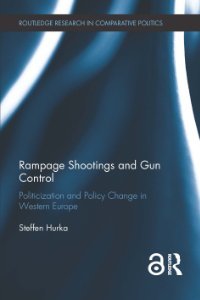By Ye Liu, Michael Siegel, Bisakha Sen
Introduction: Firearm injury is a major U.S. public health concern. This study aims to evaluate whether the relationship between state firearm laws and state firearm deaths are affected by comparatively lenient firearm laws in neighboring states.
Methods: This observational study used 2000‒2017 data on firearm deaths and firearm laws of the 48 contiguous states of the U.S. (Alaska, Hawaii, and the District of Columbia excluded). The associations among state firearm deaths, state firearm laws, and presence of neighboring states with more lenient laws were analyzed using negative binomial regression models with state- and year-fixed effects. Analyses were conducted in 2019‒2020.
Results: There were 578,022 firearm deaths of all intents during the study period or 11.1 firearm deaths (IQR=8.5-14.0) per 100,000 population. The presence of more state firearm laws was associated with decreased firearm deaths (incident rate ratio=0.991, 95% CI=0.987, 0.996). However, weaker firearm laws in neighboring states correlated with more firearm deaths within a state (incident rate ratio=1.016, 95% CI=1.004, 1.028). Failing to account for weaker laws in neighboring states led to the underestimation of the impact of 1 additional law on state's own firearm deaths (incident rate ratio=0.994, 95% CI=0.989, 0.998 vs 0.991, 95% CI=0.987, 0.996) by approximately 20%.
American Journal of Preventive Medicine: 59(5): 648-657, 2020.












